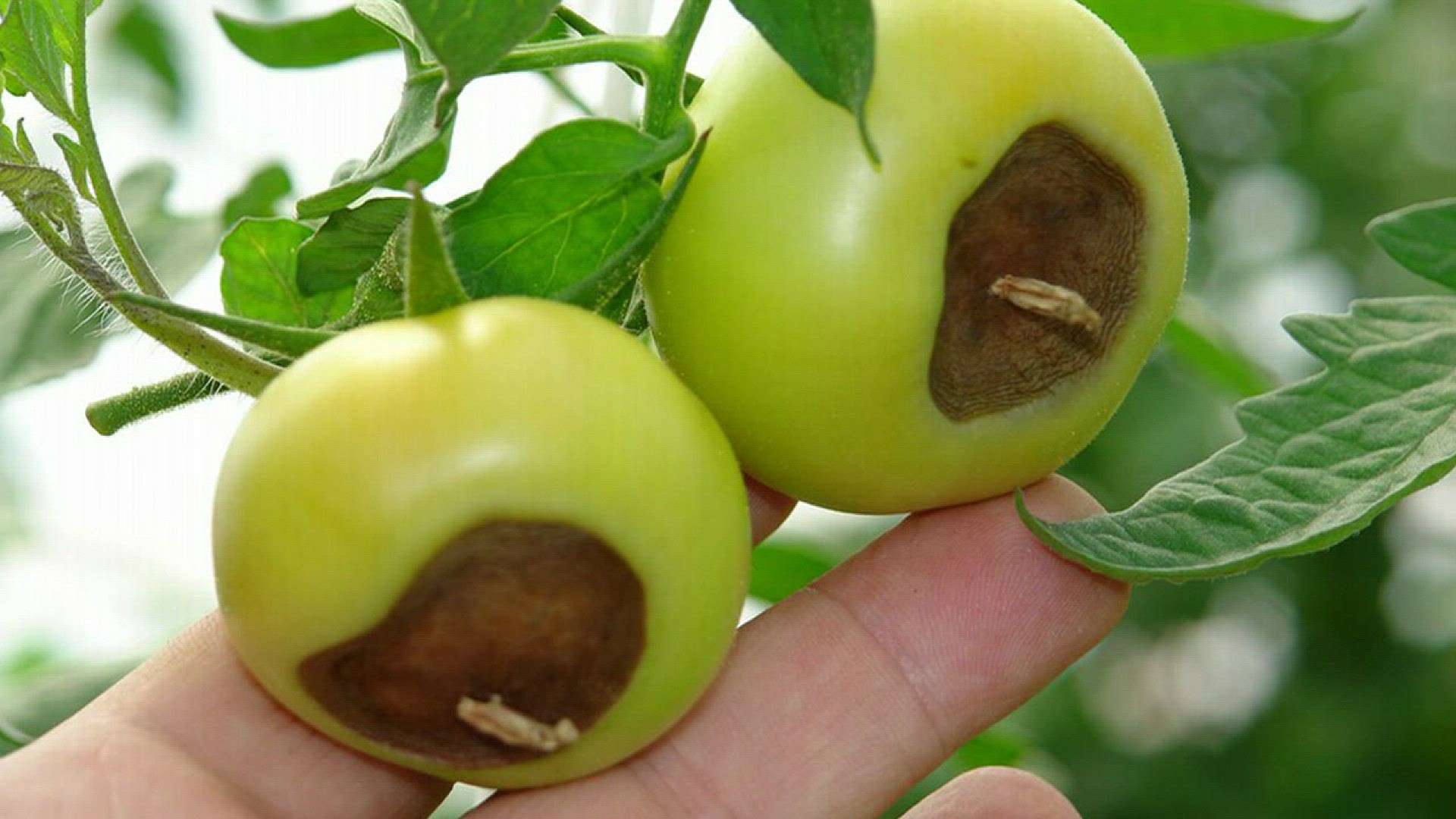Our recent cycles of cool, wet weather followed by warm, dry conditions can be a real challenge to home gardeners. And as our tomatoes and other fruits and vegetables start to come on, another problem is likely to pop up.
It’s called blossom-end rot, and it’s that ugly, brown patch that sometimes develops on the bottoms of tomatoes and peppers. Garden master Jim Duthie says that it’s something that happens to even the most experienced gardeners, but there are some things you can do to reduce the risk of it happening in your garden.
To me, there’s nothing quite as good as a fresh, ripe tomato straight from the garden. And as my garden starts to grow, I can hardly wait for the first ripe tomatoes to appear. So it can be really disappointing when you find that your tomatoes have developed a nasty little thing called blossom-end rot.
Blossom-end rot shows up mostly on tomatoes, but it can also develop on peppers and chiles, as well as on eggplants, squash and even melons. It can occur when the fruit is just forming and green, or it may develop later as the fruit begins to ripen.
Blossom-end rot is a water-soaked area that gradually gets bigger, and eventually turns into a sunken, brown, leathery spot on the bottom end of the fruit or vegetable where the blossom was.
Blossom-end rot is not a disease, and it isn’t caused by bugs. It’s actually a deficiency in calcium in the plant. Tomatoes and other fruits and vegetables need calcium to develop and grow. Calcium is very slow-moving, so if the tomato grows too quickly, or if water absorption is slowed down, the calcium won’t have time to get through the whole fruit. The tissues start to break down, and it shows up as damage at the bottom.
One reason for blossom-end rot may be that there isn’t enough calcium in the soil. That can be easily fixed.
The other more common reason is because of uneven watering. Cool wet weather, like we’ve had recently, followed by hot dry conditions, can play a large part. Also, fertilizer too high in nitrogen can lead to rapid growth, but it may reduce the intake of calcium in the plant.
If a lack of calcium in the soil is the problem, especially with container plants, try adding some gypsum or agricultural lime directly to the soil. Keep in mind, though, that lime will raise the pH in the soil to more alkaline levels, but gypsum won’t have any effect on the pH. So if you’re a soil is already high pH, or alkaline, like most of our soil here is, you’d probably be better off using gypsum.
You can also make a slurry out of gypsum or garden lime and pour it around the plant. Put two or three handfuls of gypsum in about a gallon of water and mix it up. Then pour a cup or two around the plant.
Some gardeners have even found success using antacid tablets, like tums, since they are high in calcium. Crush up a couple of tablets in a gallon of water and pour around the plant, or put a couple of tablets right in the soil around the base of the plant where it will dissolve.
There are also some foliar sprays containing calcium that can be sprayed right on the plant. They’re safe and easy to use. I’ve used this one, bonide rot-stop, which contains liquid calcium.
I spray it one even before the tomatoes form to prevent blossom-end rot from happening. The calcium is absorbed directly through the leaves into the plant, although not as quickly as when it’s taken up through the roots.
The best prevention, though, for most of us, is to keep your soil evenly moist. You don’t want the soil to be too wet or too dry. Also, avoid daily surface watering. Instead, water deeply, but less frequently, maybe once every couple of days instead of every day. Drip systems and soaker hoses can help, especially for containers, which tend to dry out faster.
Once blossom-end rot happens, there’s nothing you can do to reverse it. The fruit is basically ruined. But you can cut off the part of the tomato or vegetable that’s affected by the blossom-end rot and the rest will be okay to eat.
Blossom-end rot happens to the best of gardeners, but taking a few steps now can control it, or prevent it from happening in the first place, so you can enjoy a bounty of fresh tomatoes and vegetables throughout the summer.
Some tomato hybrids are less prone to developing blossom-end rot, including celebrity, jet star and big boy varieties, so you might want to consider planting those.
You can find gypsum and agricultural lime at most garden centers and nurseries, as well as foliar sprays containing liquid calcium.

